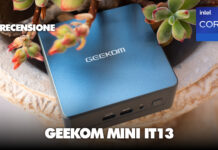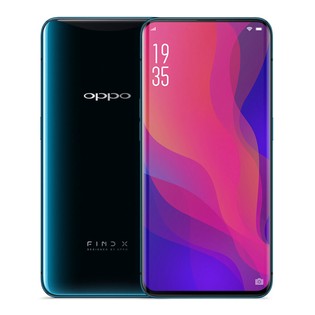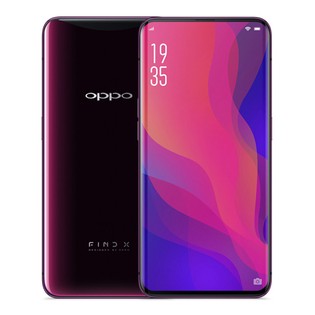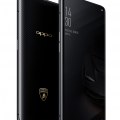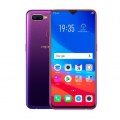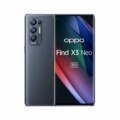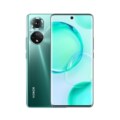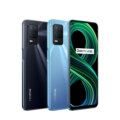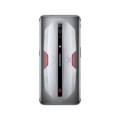OPPO Find X
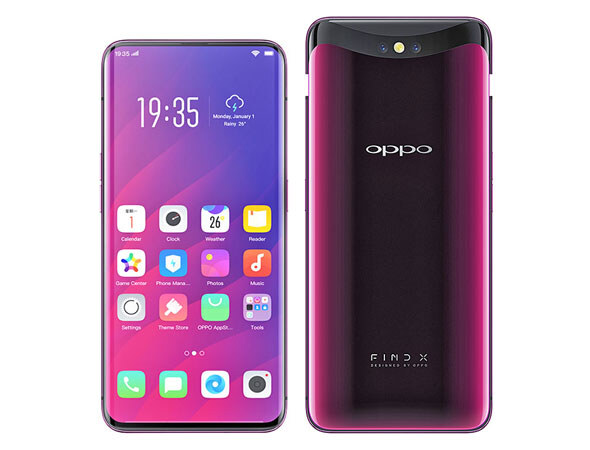


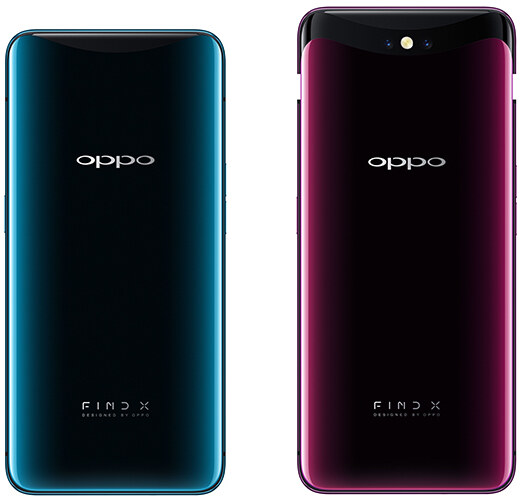
-
CPU: Qualcomm Snapdragon 845
-
RAM: 8 GB
-
Storage: 128/256 GB
-
Display: 6.42" Full HD+
-
Camera: 16 + 20 mega-pixel
-
OS: Android 8.1 Oreo
Info
OPPO Find X è il top di gamma del 2018 della casa asiatica. Questo dispositivo rappresenta una vera rivoluzione sotto il punto di vista del design rispetto agli smartphone a cui siamo abituati. La particolarità di questo Find X è tutta nel sistema di scorrimento che rivela le due fotocamere posteriori e quella anteriore.
Il processore sotto il cofano è un Qualcomm Snapdragon 845 – lo stesso già visto sugli ultimi TOP di gamma come OnePlus 6, Xiaomi Mi MIX 2S, Xiaomi Mi 8…-coadiuvato da 8 GB di RAM e 128/256 GB di memoria interna non espandibile. Il display a bordo è una unità da 6.42 pollici AMOLED con un screen-to-body ratio del 93.8% ed in formato 19.5:9. Posteriormente il sistema di slittamento rivela una dual-camera da 20 + 16 mega-pixel mentre anteriormente troviamo un sensore da 25 mega-pixel,di fianco a quest’ultimo sono posizionati anche il sensore ad infrarossi e lo scanner facciale 3D per il riconoscimento del volto e quindi dello sblocco dispositivo. Sotto la scocca, realizzata in metallo e vetro, troviamo una batteria da 3730 mAh per la versione Standard Edition,mentre una 3400 mAh per la variante Super Flash Edition che gode anche della nuova tecnologia di ricarica Super VOOC capace di ricaricare il dispositivo in soli 35 minuti. Il sistema operativo di cui è dotato questo dispositivo è Android 8.1 Oreo personalizzato con interfaccia graffia ColorOS 5.1.
Specifiche
Disponibilità
| Data di lancio | 19 Giugno 2018 |
Design
| Dimensioni | 156.7 x 74.2 x 9.6 mm |
| Peso | 186 grammi |
| Colori | Bordeaux Red, Glacier Blue |
Display
| Tipo Display Technology => A number of display technologies and types used in mobile phones => TFT (Thin Film Transistor), IPS (In-Place Switching), OLED (Organic Light Emitting Diode), AMOLED (Active-Matrix Organic Light-Emitting Diode), Super AMOLED (an even advanced version of AMOLED), Resistive Touchscreen (Resistive touchscreens contain two layer of conductive material with a very small gap between them which acts as a resistance), Capacitive Touchsceen (Capacitive touchscreen technology consists of a layer of glass coated with a transparent conductor) | Super AMOLED |
| Diagonale | 6.42 pollici |
| Risoluzione | 2340 x 1080 pixel |
| Densità Pixel Pixel Density (PPI) is refers to the concentration of pixels on a particular display, measured in pixels per inch (ppi). Pixel density is calculated by dividing the diagonal pixel resolution of a display by its diagonal size, higher pixel density better display quality. | 401 PPI |
Sblocco biometrico
Hardware
| Produttore Chipset Chipset is a group of integrated circuits designed to perform one or a more dedicated functions, often with real time computing constraints, Popular smartphones are equipped with more advanced embedded chipsets that can do many different tasks depending on their programming. | Qualcomm |
| SoC | Snapdragon 845 |
| Frequenza | 4 x 2.8 GHz + 4 x 1.8 GHz |
| Architettura | Octa-core 64 bit Kryo 385 |
| GPU GPU (Graphics Processing Unit) is a single-chip processor designed to rapidly manipulate and alter memory to accelerate the creation of images in a frame buffer intended for output to a display, This includes things such as lighting effects, object transformations, and 3D motion. | Adreno 630 710 MHz |
| RAM RAM (Random Access Memory) is a type of computer memory that can be accessed randomly, any byte of memory can be accessed without touching the preceding bytes that allows information to be stored and accessed quickly from random locations. RAM is the most common type of memory found in computer systems, smartphones, tablets and other electronic devices. | 8 GB LPDDR4X-1866 dual channel |
| Memoria | 128/256 GB UFS 2.1 |
| Espandibilità |
Software
| Sistema Operativo OS => Every computer system run on a base software called Operating System (OS). Operating System controls all basic operations of the computer (such as smartphone, PDAs, tablet computers and other handheld devices). The Operating System allows the user to install and run third party applications (apps), apps are used to add new functionality to the device. | Android 8.1 Oreo |
| Interfaccia Utente UI or user interface of a device is the look and feel of the on-screen menu system. How it works, its color scheme, how it responds to button presses, all of these things are part of the user interface. | ColorOS 5.1 |
Batteria
| Capacità Battery Capacity is a measure (typically in Amp-hr) of the charge stored by the battery, and is determined by the mass of active material contained in the battery. The battery capacity represents the maximum amount of energy that can be extracted from the battery under certain conditions. | 3730 mAh (Standard Edition), 3400 mAh (Super Flash Edition) |
| Ricarica rapida | VOOC (Standard Edition), Super VOOC (Super Flash Edition) |
| Ricarica wireless | No |
Connettività
| Bluetooth Bluetooth is a wireless communications technology for exchanging data between mobile phones, headsets, computers and other network devices over short distances without wires, Bluetooth technology was primarily designed to support simple wireless networking of personal consumer devices. | 5.0 |
| Wi-Fi Wi-Fi is a popular wireless networking technology using radio waves to provide high-speed network connections that allows devices to communicate without cords or cables, Wi-Fi is increasingly becoming the preferred mode of internet connectivity all over the world. | 802.11a/b/g/n/ac |
| GPS | GPS/A-GPS/GLONASS/BeiDou |
| NFC NFC (Near field communication) is a set of standards for smartphones and similar devices to establish peer-to-peer radio communications with each other by touching them together or bringing them into proximity, usually no more than a few inches. | |
| USB | Type-C 2.0 |
| Uscita Video HDMI (High-Definition Multimedia Interface) is a compact audio/video interface for transferring uncompressed video data and compressed or uncompressed digital audio data from a HDMI-compliant source device to a compatible computer monitor, video projector, digital television, or digital audio device. | |
| Radio FM | |
| Infrarossi Infrared connectivity is an old wireless technology used to connect two electronic devices. It uses a beam of infrared light to transmit information and so requires direct line of sight and operates only at close range. |
Audio
| Speaker | Inferiore |
Fotocamera
| Sensore | Sony IMX519 f/2.0-2.0 |
| Stabilizzazione | Yes |
| Autofocus | Sì |
| Video | 4k a 30/60fps, 1080p a 30/60fps, 720p a 30/60fps |
| Selfie camera | 25 mega-pixel |
Offerte
GearBest
GeekBuying
OPPO Find X è il top di gamma del 2018 della casa asiatica. Questo dispositivo rappresenta una vera rivoluzione sotto il punto di vista del design rispetto agli smartphone a cui siamo abituati. La particolarità di questo Find X è tutta nel sistema di scorrimento che rivela le due fotocamere posteriori e quella anteriore.
Il processore sotto il cofano è un Qualcomm Snapdragon 845 – lo stesso già visto sugli ultimi TOP di gamma come OnePlus 6, Xiaomi Mi MIX 2S, Xiaomi Mi 8…-coadiuvato da 8 GB di RAM e 128/256 GB di memoria interna non espandibile. Il display a bordo è una unità da 6.42 pollici AMOLED con un screen-to-body ratio del 93.8% ed in formato 19.5:9. Posteriormente il sistema di slittamento rivela una dual-camera da 20 + 16 mega-pixel mentre anteriormente troviamo un sensore da 25 mega-pixel,di fianco a quest’ultimo sono posizionati anche il sensore ad infrarossi e lo scanner facciale 3D per il riconoscimento del volto e quindi dello sblocco dispositivo. Sotto la scocca, realizzata in metallo e vetro, troviamo una batteria da 3730 mAh per la versione Standard Edition,mentre una 3400 mAh per la variante Super Flash Edition che gode anche della nuova tecnologia di ricarica Super VOOC capace di ricaricare il dispositivo in soli 35 minuti. Il sistema operativo di cui è dotato questo dispositivo è Android 8.1 Oreo personalizzato con interfaccia graffia ColorOS 5.1.





